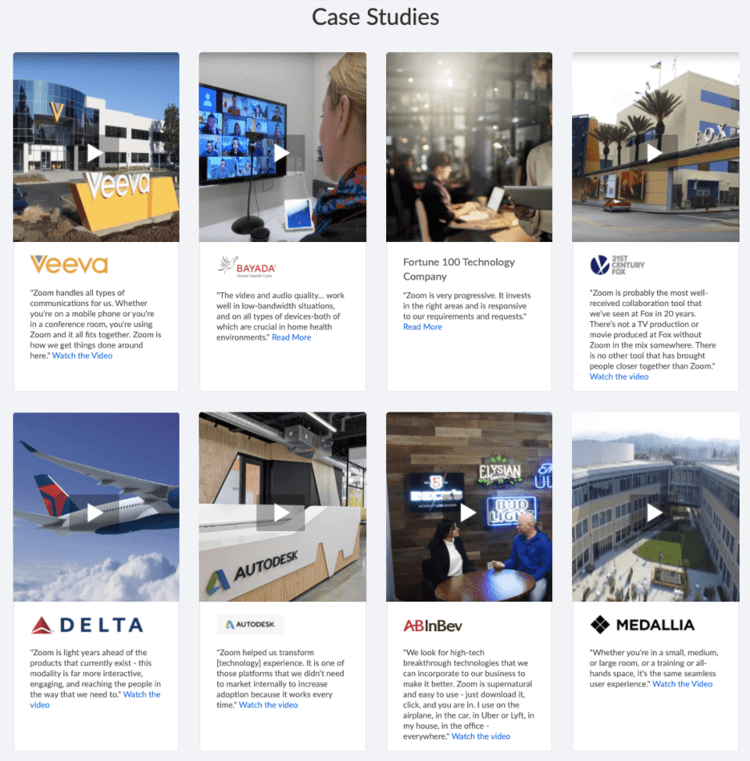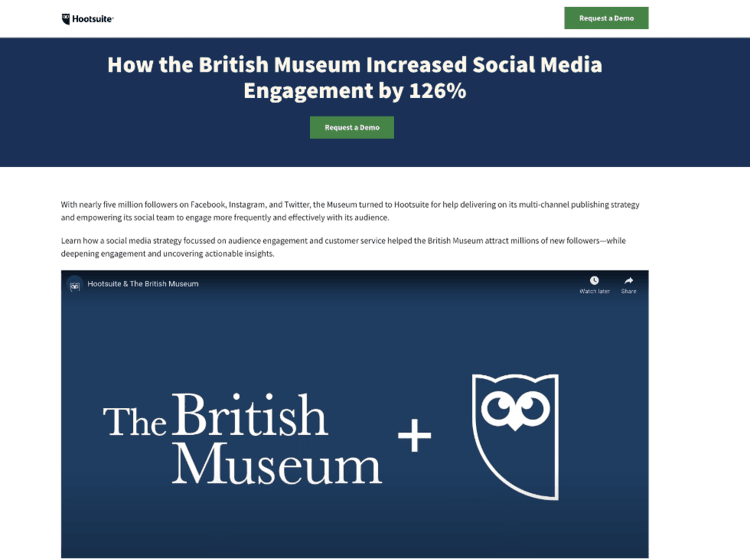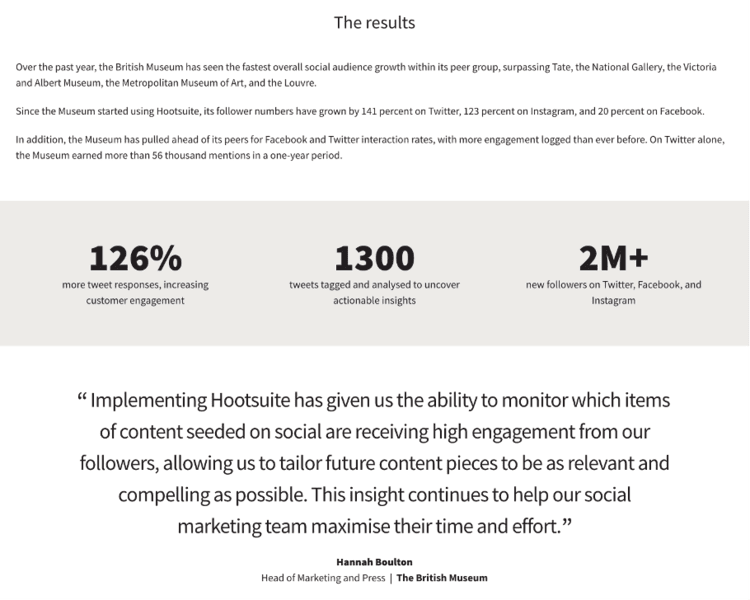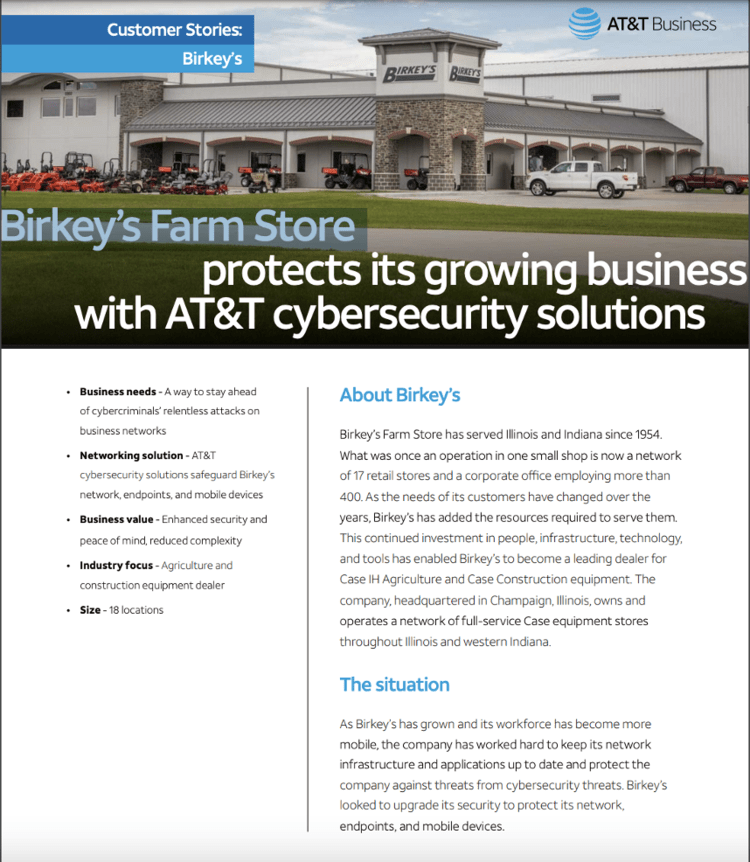Teams are constantly looking for ways to stand out in crowded markets. Customer case studies may be just the differentiator companies have been seeking to give them that competitive edge. Not only do customer case studies showcase the types of pain points that a product or service can address, but they also highlight the results and successes real-life users have seen.
To put it simply, a customer case study is a real-life, detailed story that spotlights a customer’s opinions and achievements based upon the usage of a product or service.
Elevate your product marketing strategy with this free kit >>
Typically, customer case studies follow this format:
- Introduction: Setting the stage with situational context
- Challenge: Evaluating the problem at hand
- Solution: Providing an overview of how the product or service was used
- Benefits: Highlighting the key advantages
- Results: Recapping the aftereffect once the product or service was implemented
Similar to how competitive comparison landing pages provide trust and credibility for a brand through real-life recommendations, customer case studies deliver the same effect. These studies are people-focused, factual, and stray away from the promotional lingo that prospective customers have seen time and time again during their product search. After all, what prospect wouldn’t want some insight on the successes users have seen thus far?
Now that you have a better understanding of what a customer case study is, let’s dive into why they are important from a competitive standpoint and explore some tips on how to incorporate them into your marketing strategy.
The importance of customer case studies
Competition is heating up more quickly than ever before and is not expected to cool off anytime soon. Our 2021 State of Competitive Intelligence Report found that 53% of businesses say that the majority of their deals are competitive–an 8% increase from last year.
Sales teams need the help of marketers more than ever before to combat the growing number of industry rivals. To be successful in prospective calls, in particular, they need to be equipped with loads of marketing collateral, battlecards to guide them through objection-handling, and more. Customer case studies may be that piece of collateral they didn’t realize was missing from their stack to help seal the deal.
According to Eccolo Media’s 2015 B2B Technology Content Survey Report, customer case studies rank as the fifth most influential content marketing type in the purchase process for both small technology businesses and large enterprises. That’s an impressive ranking when it's being compared to assets such as product brochures, emails, and white papers. In fact, 42% of respondents said that in the last six months of the survey, they had consumed customer case studies as a way to evaluate a technology purchase.
As I’m sure you can see, there’s no doubt that customer case studies can help you stand out from your competitors. Let’s take a look at some examples that you can model yours after.
Successful customer case study examples
While some customer case studies come in the written form (typically distributed as a PDF), other organizations opt to turn it into a video–or do a combo of both.
Check out these examples from Zoom, Hootsuite, and AT&T below:
1. Zoom featuring Groupon
In this example, Zoom opted for a video case study. It opens up with a multimedia services manager at Groupon discussing the company’s pain points and then goes into how Zoom helped solve them. The video is professional, to-the-point, and highlights how Zoom has provided Groupon with a standardized platform that meets the needs of its video-first culture.

As you can see above, Zoom also has an entire web page dedicated to case study videos–all highlighting different industries but with the same end-goal–streamline companies’ telecommunications needs. It’s clear that the page can resonate with a variety of audiences and that’s the key to success.
2. Hootsuite featuring The British Museum

This case study example from Hootsuite is a combination of both text and video. When you first open the page, it provides some context at the top describing who is being spotlighted and why (The British Museum). The page then immediately dives into a video. Following that video are the following sections: “What They Did," “How They Did It," and “The Results." This approach appeals to prospects looking for both a quick synopsis (the video) or more in-depth information (the written portion).

Looking at the example above, the page ends with some impressive statistics bolded to grab a reader's attention and a quote provided by a member of the customer’s leadership team. Prospects will walk away with a comprehensive understanding of how the platform could benefit them and the types of results customers have achieved.
3. AT&T featuring Birkey's Farm Store

AT&T chose a more traditional route for a customer case study with Birkey’s Farm Store–a PDF format. This format ensures that all of the information is organized, clearly displayed and that the key elements are emphasized. This format allows for a visual representation of data and easy scanning for important details. For those in a time crunch, chances are they’ll prefer this format–just be sure you’re engaging readers through graphics, bolded text, colors, etc.
Historically, customer case studies were in written form but as technology evolves, videos have come into play, stealing the spotlight. While there is no right or wrong format to use (it truly does depend on a reader’s preference), it is important to note that HubSpot estimated that over 50% of consumers want to see videos from brands more than any other type of content. My vote goes to a combination of both like the Hootsuite example!
5 tips for creating a customer case study
Now that you’ve checked out some examples of what a good customer case study looks like, let’s dive into some tips on how to be successful in creating one.
1. Determine your target persona(s) upfront
Before putting pen to paper, pinpoint the groups within your target audience that your case study should resonate with. Catering your studies to specific personas will ensure that the right audience is reached and that it is relevant to your readers.
2. Connect with your team
Be sure to connect with your company’s customer success and sales teams to hear what customers they think are best to target. After all, they will have great insight since they are the day-to-day contacts. You’ll want to choose customers with whom you have strong relationships and who, of course, have seen great results based upon implementing your solution. While the case study would be “free advertising” for them, there’s no doubt that they’d be doing you a favor by going out of their way to help you bring this asset to life.
3. Create case study interview questions
Once you’ve got your customer(s) selected for the case study (and they’ve agreed to participate), take some time to draft out universal interview questions. Ideally, these questions can be used in the future and are general enough to translate to all industries that would be spotlighted on your page.
Your customer(s) will also be appreciative of your preparedness. It’s important to make the process as easy as possible for them and coming in prepared with a list, will ensure that your conversation is focused and strategic. After all, your case study needs a beginning, middle, and an end–make sure you gather enough information to put it all together into a full story.
4. Utilize statistics
Although your customer’s “results” won’t be revealed until the end of the case study, don’t shy away from using stats throughout it–in fact, it’s encouraged! Statistics stick out to any viewer and can be helpful for those trying to sway decision-makers. For example, when setting the scene, describe how many employees and locations the customer has and make those numbers stand out. Although it may seem minute, these stats can help readers determine whether their company is similar and the results achieved are comparable.
5. Build out a case study web page
It’s important to showcase your case studies in a strategic, organized, and easily accessible way (scroll back up to the Zoom example as an example). Create a designated case study hub on your website. When building out this page, it’s important to have a plethora of customer case studies–that way there will always be a case study that a prospect can relate to. Be sure that all types of industries you work with are represented and that your page is broad enough to appeal to the masses.
Incorporate case studies into your marketing plan
Marketing teams are always looking for ways to express the benefits of a product or service authentically and creatively. This type of non-promotional collateral can make a major impact on the number of leads generated and can add a new level of credibility to your brand name. It paints a picture of the types of success a prospect could have and that’s the recipe to success for any deal getting closed.
Not only do customer case studies showcase the value of your product or service, but potential customers are provided with a better sense of how real customers leverage it to excel their business. And as a bonus, it’s free publicity for your customers–that's a win-win in my book!
If you have any other tips for creating a successful customer case study, let us know in the comments below!

Seeing is believing! Check out Crayon for yourself.
Take a Product TourRelated Blog Posts
Popular Posts
-
 The 8 Free Market Research Tools and Resources You Need to Know
The 8 Free Market Research Tools and Resources You Need to Know
-
 6 Competitive Advantage Examples From the Real World
6 Competitive Advantage Examples From the Real World
-
 How to Create a Competitive Matrix (Step-by-Step Guide With Examples + Free Templates)
How to Create a Competitive Matrix (Step-by-Step Guide With Examples + Free Templates)
-
 24 Questions to Consider for Your Next SWOT Analysis
24 Questions to Consider for Your Next SWOT Analysis
-
 How to Measure Product Launch Success: 12 KPIs You Should Be Tracking
How to Measure Product Launch Success: 12 KPIs You Should Be Tracking



